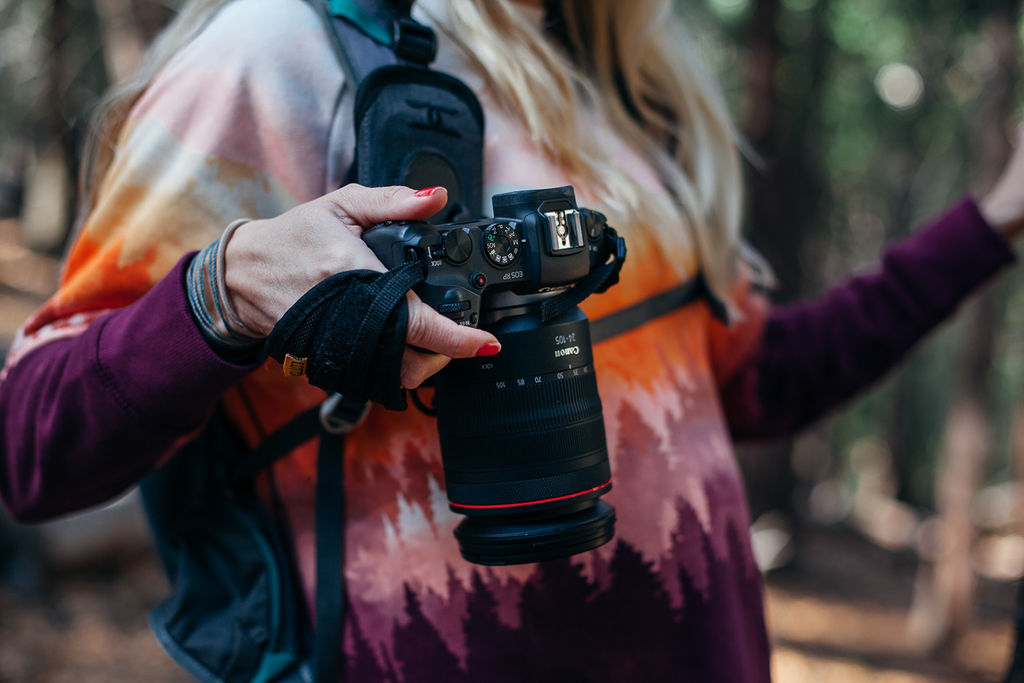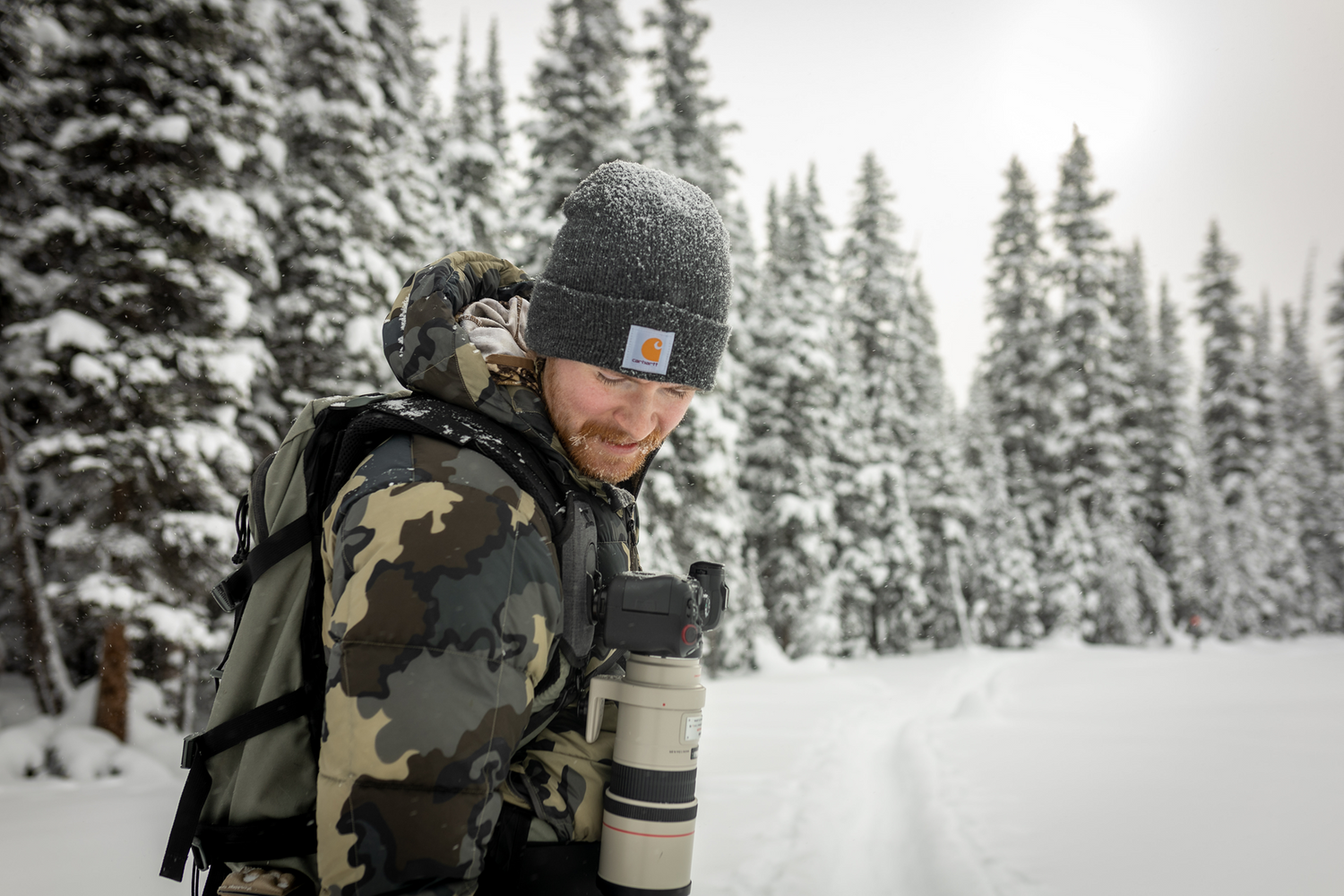Photography may seem like a relatively stationary profession, but it demands significant physical effort and endurance. The act of carrying heavy gear, standing or crouching for extended periods, and moving to capture the perfect shot can take a toll on the body. Building stamina and strength is crucial for photographers to maintain their health and perform at their best. Also, using ergonomically-designed carriers can help distribute the weight of your gear and reduce strain, making it easier to manage the physical demands of photography.
The Physical Demands of Photography
Photographers often face physical challenges such as carrying heavy equipment, maintaining awkward postures, and standing for long hours. These activities can lead to discomfort and pain, particularly in the back, shoulders, wrists, and legs. Understanding these challenges is the first step towards mitigating their impact and ensuring a long, healthy career in photography.
Cardiovascular Exercises for Stamina
Importance of Cardiovascular Health for Photographers
Cardiovascular health is essential for photographers as it enhances overall endurance and energy levels. Improved stamina allows photographers to sustain long shoots and navigate various terrains without becoming overly fatigued.
Recommended Cardio Exercises
-
Brisk Walking: A simple yet effective way to improve cardiovascular health.
- How It Helps: Increases overall stamina, making it easier to endure long photo shoots and walk between locations without getting tired.
-
Jogging: Increases stamina and strengthens the heart.
- How It Helps: Builds endurance for photographers who need to move quickly and frequently during events or outdoor shoots.
-
Cycling: Enhances leg strength and cardiovascular fitness.
- How It Helps: Strengthens leg muscles, which supports carrying heavy gear over longer distances.
Tips for Incorporating Cardio into a Busy Schedule
- Short Sessions: Aim for 15-20 minutes of brisk walking or jogging daily.
- Use a Bike: Cycle to work or during breaks.
- Active Breaks: Take short, frequent walks during long editing sessions.
Strength Training Exercises
Upper Body
Shoulder Press
Benefits: Strengthens shoulders and upper arms.
How to do it:
- Stand with feet shoulder-width apart.
- Hold dumbbells at shoulder height with palms facing forward.
- Press weights overhead until arms are fully extended.
- Lower back to starting position and repeat.
Rows
Benefits: Strengthens back muscles.
How to do it:
- Stand with feet shoulder-width apart, knees slightly bent.
- Hold dumbbells with arms extended, palms facing each other.
- Bend forward at the waist, keeping back straight.
- Pull dumbbells towards your waist, squeezing shoulder blades together.
- Lower weights and repeat.
Core
Planks
Benefits: Builds core strength and stability.
How to do it:
- Start in a push-up position with forearms on the ground.
- Keep body in a straight line from head to heels.
- Hold the position, engaging the core, for as long as possible.
Russian Twists
Benefits: Strengthens oblique muscles.
How to do it:
- Sit on the ground with knees bent and feet flat.
- Lean back slightly, keeping spine straight.
- Hold a weight or medicine ball with both hands.
- Twist torso to the right, then to the left to complete one rep.
Lower Body
Squats
Benefits: Builds leg and lower back strength.
How to do it:
- Stand with feet shoulder-width apart.
- Lower body as if sitting back into a chair, keeping knees behind toes.
- Return to standing position and repeat.
Lunges
Benefits: Strengthens legs and improves balance.
How to do it:
- Stand with feet together.
- Step forward with one leg and lower body until both knees are bent at 90-degree angles.
- Push back to starting position and switch legs.
Flexibility and Mobility Exercises
Stretching
Importance of Flexibility for Preventing Injuries Maintaining flexibility helps prevent injuries by ensuring that muscles and joints move efficiently and effectively.
Recommended Stretches
-
Hamstring Stretch: Sit with one leg extended and reach towards your toes.
- How It Helps: Increases flexibility in the legs, reducing the risk of strains when bending or crouching.
-
Shoulder Stretch: Pull one arm across your body and hold with the opposite hand.
- How It Helps: Relieves tension in the shoulders, which can build up from carrying heavy gear.
Yoga
Benefits of Yoga for Photographers Yoga enhances flexibility, reduces stress, and improves overall body strength and balance.
Suggested Poses
-
Downward Dog: Stretches the back, hamstrings, and calves.
- How It Helps: Relieves back and shoulder tension, providing a full-body stretch that improves flexibility and posture.
-
Child's Pose: Provides a gentle stretch for the back and hips.
- How It Helps: Offers a relaxing stretch that helps release lower back and hip tension after long shoots.
Preventing and Managing Injuries
Common Injuries Among Photographers and How to Avoid Them
Photographers often suffer from back pain, shoulder strain, and repetitive strain injuries. Proper posture, regular breaks, and ergonomic gear can help prevent these issues.
Importance of Rest and Recovery
Rest and recovery are crucial for muscle repair and overall health. Ensure you get adequate sleep and incorporate rest days into your exercise routine.
Tips for Managing Pain and Discomfort
- Stretch Regularly: Incorporate daily stretching to maintain flexibility.
- Use a Good Camera Harness: Distribute weight evenly to reduce strain on specific body parts.
- Apply Heat or Cold: Use heating pads or ice packs to manage pain and inflammation.
Creating a Balanced Exercise Routine
Tips for Developing a Weekly Exercise Plan
- Mix It Up: Include a variety of cardiovascular, strength, and flexibility exercises.
- Schedule Consistently: Set aside specific times for exercise each week.
- Progress Gradually: Increase the intensity and duration of exercises gradually to avoid injury.
Importance of Consistency and Gradual Progression
Consistency is key to seeing results, and gradual progression helps prevent overexertion and injury.
Combining Different Types of Exercises for Overall Fitness
A well-rounded fitness routine that includes cardio, strength training, and flexibility exercises ensures comprehensive physical conditioning.
Regular exercise is essential for photographers to build the stamina and strength needed to handle the physical demands of their profession. Incorporating these exercises into your routine can improve your endurance, strength, and overall well-being, making your work more enjoyable and sustainable. Start incorporating these exercises into your routine and invest in a camera carrier to enhance comfort and reduce strain while working.





